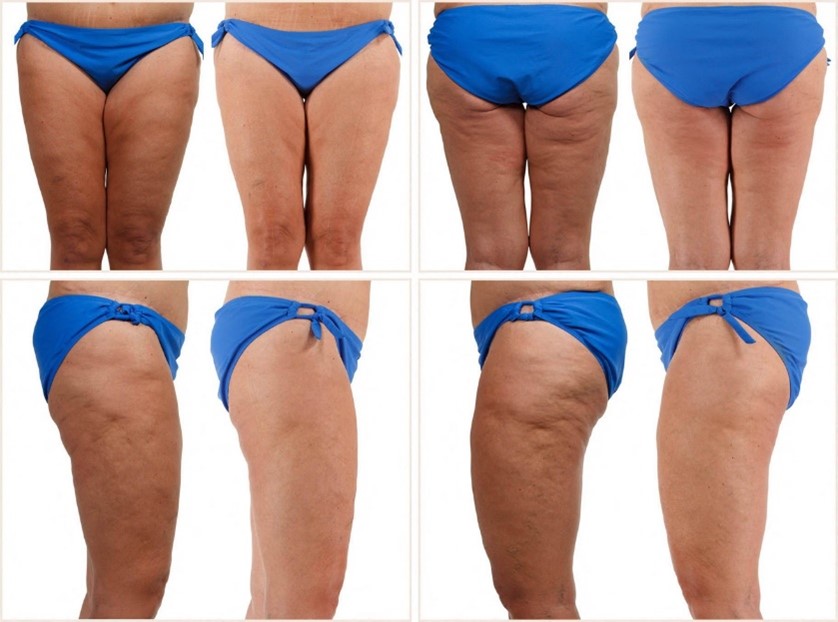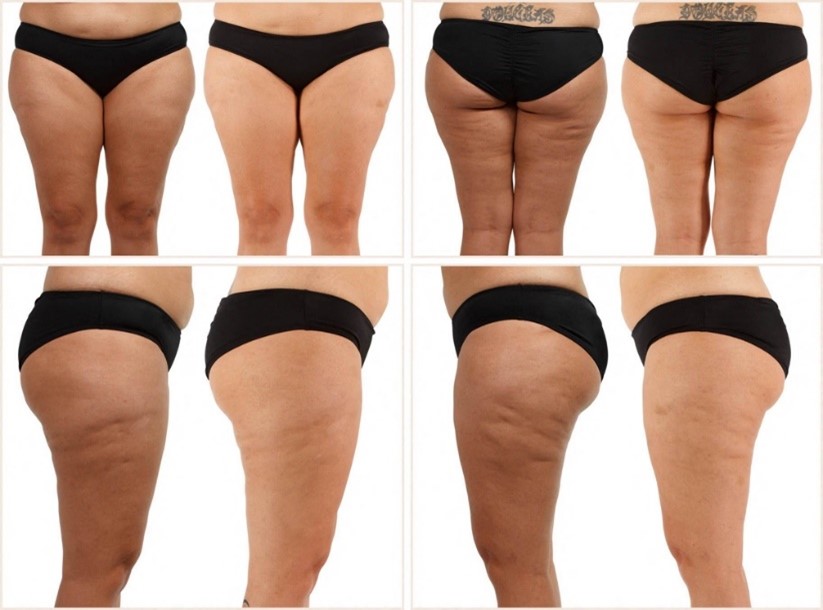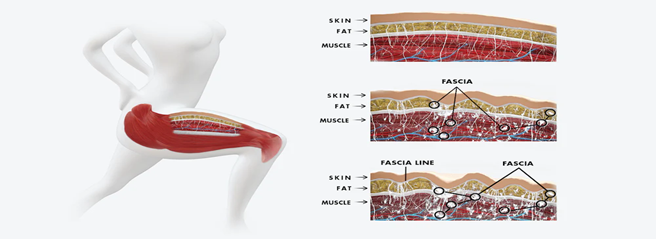Fascia Blasting & Benefits
What is fascia?
Fascia is a continuous layer of connective tissue that covers all your muscles, bones, organs, and nerves. It’s mostly made of collagen, and it helps to give form to your body. When fascia is healthy, it’s flexible enough to twist, glide, and bend. But inflammation and trauma can tighten the fascia, causing pain. Additionally, fascia contains many nerves that are sensitive to pain. Fascia pain is associated with various conditions, such as:
- myofascial pain syndrome
- fibromyalgia
- plantar fasciitis
- lower back pain
- It’s also believed that fascia plays a role in cellulite
How does fascia blasting work?
Fascia blasting is a form of fascial manipulation. It involves a hard plastic tool called the FasciaBlaster, which was invented by Ashley Black. The tool looks like a long stick with little claws or feet attached to it. A fascia blaster is meant to be massaged all over the body, one area at a time to loosen up the fascia. It’s recommended to lightly massage your skin and drink plenty of fluids after the procedure. You can also take a cold shower to reduce any swelling. Fascia blasting and weight-loss
One study involved 33 women with thigh cellulite. The participants used the FasciaBlaster on their thighs 5 days a week for 12 consecutive weeks. The researchers measured the women’s subcutaneous thigh fat, or fat under the skin, every 4 weeks. After 12 weeks, the researchers found that the women’s subcutaneous thigh fat had decreased The protocol was to FasciaBlast a total of 5 days per week, with 2 days on, and 1 day off. They also observed a reduction in the appearance of cellulite. They also observed a reduction in the appearance of cellulite. According to the authors of this study, fascia manipulation could help cellulite by freeing the fat cells from the fibrous bands. This just one small study.
Benefits include:
- reduced cellulite
- firmer skin
- less muscle pain
- less joint pain
- increased circulation
Side Effects include:
- bruising
- skin discoloration
- increased varicose veins
- increased pain
- extreme tiredness and fatigue


Your overall health, age, muscle tone, diet, and aspirin use may affect your degree of bruising. Everyone is different. Before you start FasciaBlasting, talk to your doctor if you are on any medications or have any physical illnesses that would be affected by blasting, as this may increase your chances of bruising or bruising abnormally.

This diagram can help one understand how one person may go very light and bruise, and someone can go very hard and not bruise at all. Or why you might blast the same pressure for 10 sessions and not bruise but on the 11th you might. It’s all because of where the fascia problems are hiding.
When you remodel your fascia tissue through FasciaBlasting:
- FasciaBlasting may rupture the tiny blood vessels supplying the tissue
- These tiny vessels are called capillaries and when they break, they leak a small amount of blood into the tissue itself. The “leakage” will metabolize and be reabsorbed.
- As the leakage is reabsorbed, it is cleansed by little drains in the fascia and the lymphatic system.
- The bruise can go through a series of color changes before finally turning a brownish skin tone and fading away.
- The end result is when the tissue heals, we can expect the tissue to heal in a more healthy way. We see this in the ultrasound image.
- The micro-trauma creates acute short term inflammation – the body’s initial response to healing. The body’s natural response of sending healthy blood flow to the bruise site is a good thing.
Remember, if your fascia is in such bad shape that the pain is intense, back off on the pressure a bit! Find a fine line between discomfort and pain. Sore is normal!
Sources:
https://www.healthline.com/health/fascia-blasting#bottom-line


